Potrebujeme váš súhlas na využitie jednotlivých dát, aby sa vám okrem iného mohli ukazovať informácie týkajúce sa vašich záujmov. Súhlas udelíte kliknutím na tlačidlo „OK“.
ASTM E1715-01(2013)
Standard Practice for An Object-Oriented Model for Registration, Admitting, Discharge, and Transfer (RADT) Functions in Computer-Based Patient Record Systems (Withdrawn 2017)
Automaticky preložený názov:
Štandardné praktiky pre objektovo orientovaný model pre registráciu a pripúšťa, vypúšťanie a prevod (RADT) funguje v Computer-Based záznamov o pacientoch Systems
NORMA vydaná dňa 1.3.2013
Informácie o norme:
Označenie normy: ASTM E1715-01(2013)
Poznámka: NEPLATNÁ
Dátum vydania normy: 1.3.2013
Kód tovaru: NS-42763
Počet strán: 31
Približná hmotnosť: 93 g (0.21 libier)
Krajina: Americká technická norma
Kategória: Technické normy ASTM
Kategórie - podobné normy:
Anotácia textu normy ASTM E1715-01(2013) :
Keywords:
electronic health record (EHR), object modeling, registration, admitting, discharge, and transfer (RADT) , reservation, ICS Number Code 35.240.80 (IT applications in health care technology)
Doplňujúce informácie
| Significance and Use | ||||||||||||||||||||
|
5.1 RADT Object Model as a Basis for Communication—The RADT object model is the first model used to create a common library of consistent entities (objects) and their attributes in the terminology of object analytical models as applied to the healthcare domain. These object models can be used to construct and refine standards relating to healt care information and its management. Since the RADT object model underpins the design and implementation of specific systems, it provides the framework for establishing the systematics of managing observations made during health care. The observations recorded during health care not only become the basis for managing an individual's health care by practitioners but are also used for research and resource management. They define the common language for abstracting and codifying observations. The inconsistency and incompleteness of the data recorded in paper records is well known and has been noted by the Institute of Medicine's study 5.2 Common Terminology as a Basis for Education—The use of models and their associated terminology implies that education of the healthcare practitioners shall incorporate this view to a significant extent. While a detailed specification of systems requires extensive lexicons of carefully defined terms, a more understandable terminology shall evolve for the process of educating practitioners during their formal education as well as continuing to educate current practioners concerning how this new technology can be integrated with their existing practices. This challenge has yet to be met, but the objects and modeling concepts presented here are intended to be named with the most intuitive titles in order to promote clear understanding during their use in instruction. Nevertheless, relating these objects and their properties to everyday practice remains a significant challenge, for both the implementors of systems and educators. The perspectives cataloged here can be used in the creation of system documentation and curricula represented in a variety of media. |
||||||||||||||||||||
| 1. Scope | ||||||||||||||||||||
|
1.1 This practice is intended to amplify Practice E1239 and to complement Practice E1384 by detailing the objects that make up the reservation, registration, admitting, discharge, and transfer (RADT) functional domain of the computer-based record of care (CPR). As identified in Practice E1239, this domain is seminal to all patient record and ancillary system functions, including messaging functions used in telecommunications. For example, it is applicable to clinical laboratory information management systems, pharmacy information management systems, and radiology, or other image management, information management systems. The object model terminology is used to be compatible with other national and international standards for healthcare data and information systems engineering or telecommunications standards applied to healthcare data or systems. This practice is intended for those familiar with modeling concepts, system design, and implementation. It is not intended for the general computer user or as an initial introduction to the concepts. |
||||||||||||||||||||
| 2. Referenced Documents | ||||||||||||||||||||
|
Podobné normy:
Historická
1.6.2013
Historická
1.3.2013
Historická
1.3.2013
Historická
1.3.2010
Historická
1.3.2007
Historická
1.3.2013
Odporúčame:
Aktualizácia technických noriem
Chcete mať istotu, že používate len platné technické normy?
Ponúkame Vám riešenie, ktoré Vám zaistí mesačný prehľad o aktuálnosti noriem, ktoré používate.
Chcete vedieť viac informácií ? Pozrite sa na túto stránku.


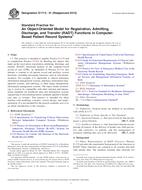
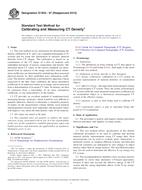 ASTM E1935-97(2013)..
ASTM E1935-97(2013).. ASTM E1985-98(2013)..
ASTM E1985-98(2013)..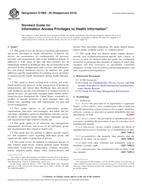 ASTM E1986-09(2013)..
ASTM E1986-09(2013)..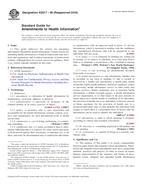 ASTM E2017-99(2010)..
ASTM E2017-99(2010)..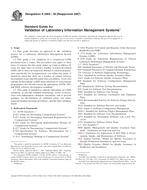 ASTM E2066-00(2007)..
ASTM E2066-00(2007)..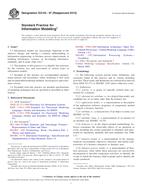 ASTM E2145-07(2013)..
ASTM E2145-07(2013)..
 Cookies
Cookies
